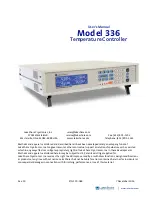12
2C) Zone Set point Limits
It cannot be stressed enough that must take caution and properly explain to the user or tenants of the
building or system that a demand based heating or cooling system is designed to respond to actual local
demand of a number of selected zones. Even if the local demand cannot be meet by the central system.
For the following reason it is recommended to “limit” the set point adjustments of any zone controller that
have actual demand voting capacity at the RTU controller. It is also recommended to limit set points of all
zones even if they are not voting on central RTU demand.
This will prevent any local set point adjustments that may create heating or cooling locking conditions at the
RTU controller by having local set points that are not reachable. It also avoids any master voting controller
from having unreasonable authority over the zoning system.
Ex.: If a local user sets the current occupied set point to 62
°
F, the PI weighted demand sent by this zone to
the RTU controller will always be at its maximum value.
Configuration Parameter
Factory Default Value
Recommended Settings
Heat max
Maximum local heating set point limit
Default:
90 °F (32 °C)
75 °F (24 °C)
Cool min
Minimum local cooling set point limit
Default:
54 °F (12 °C)
68 °F (20 °C)
2D) Heating and Cooling Weight Zone Selection
For any system to operate properly, care must be taken to select which zones will be driving the system as
well as their weight attached to the calculations.
The values below are provided as an initial rule of thumb and need to be re-evaluated on a job per job
basis depending on the specifics of the system design and layout.
Total number of
zones
System layout
Recommended initial
number of master voting
zones with weight
1 to 5
All internal or external zones
1 to 3
3 to 5
Mix and match of internal and external zones
2 to 3
6 to 20
Mix and match of internal and external zones
3 to 8
21 +
Mix and match of internal and external zones
8 +
Notes regarding the master voting zones selection:
o
Not all zones in the system need to be masters. A good rule of thumb is to provide a ratio of 1/3 to
1/2 of the total number of zones which can be master to the system.
o
On larger installations where internal zones are present in the system. I.E. zones not exposed to
an outside wall. The ratio of internal to external master zones should be in the approximate range
of 1 internal zone to 4 external zones.


















